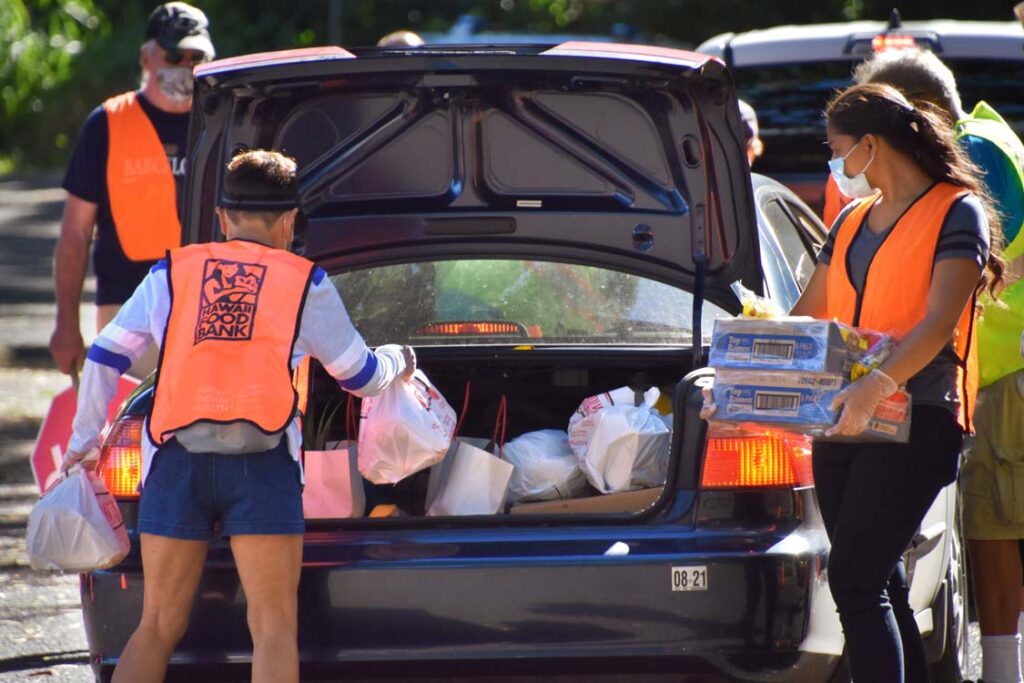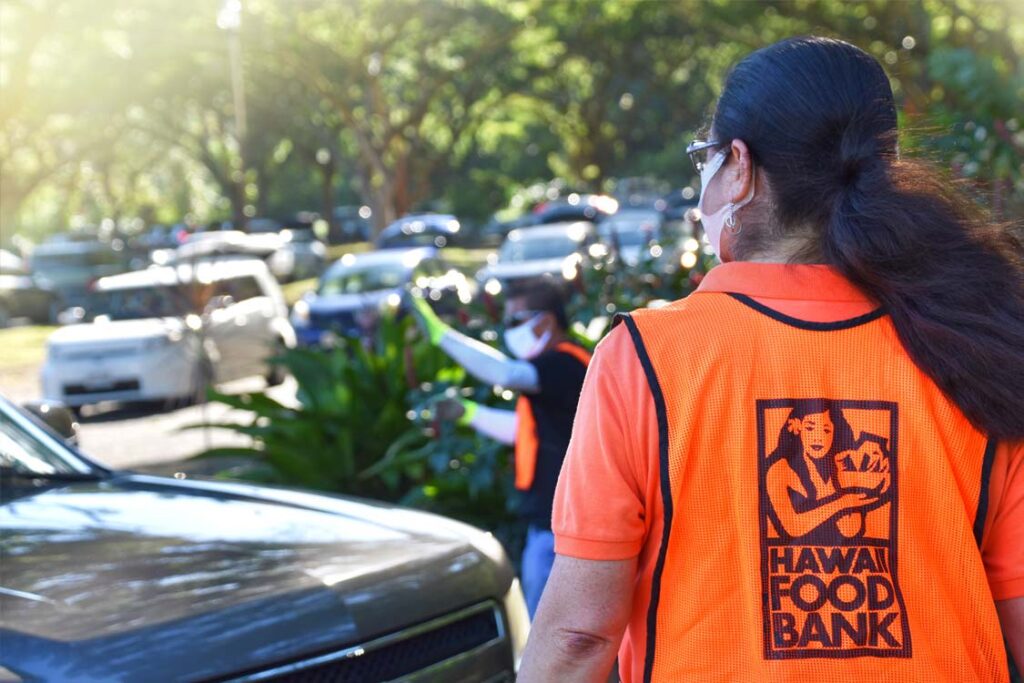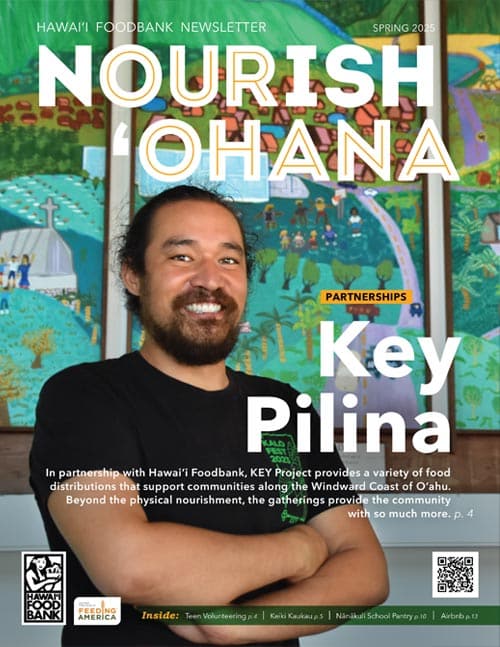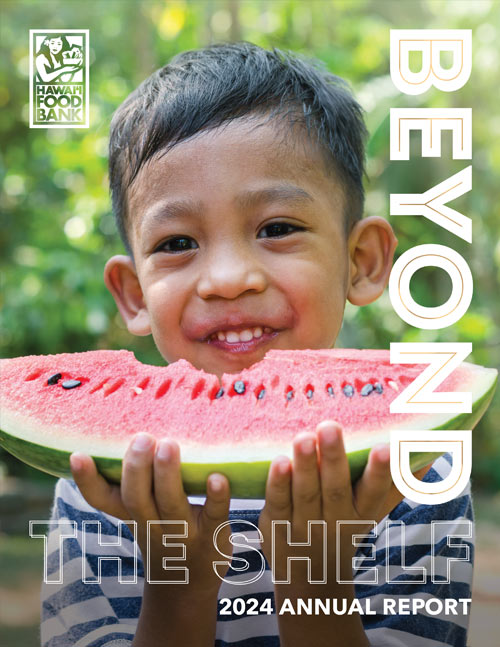COVID-19: One Year Later

Laura Kay Rand
As the need for food continues, this crisis is far from over — but Hawaiʻi is resilient.
It’s hard to imagine it’s been an entire year of living through a global pandemic. So much has happened since COVID-19 first arrived on our shores last March. A year ago, hunger in Hawaiʻi was actually decreasing. But now — due to the ongoing pandemic, resulting economic downturn and recent events like the storms and flooding across the islands — hunger in our communities is at its highest level in almost a century.
We are seeing an entirely new level of need now, and — as we’ve learned from previous disasters — the recovery will take years. Unemployment in our communities remains the highest in the United States, and 1 in 6 residents will likely continue to struggle with hunger this year. This includes more than 81,000 of Hawaiʻi’s keiki, who are now among the hardest hit populations in the entire country. According to Feeding America, Hawaii now holds the second highest projected rate of child food insecurity among all 50 states.
The pandemic has demonstrated how fragile food security can be, but it has also shown us just how resilient the people of Hawaiʻi are.
Over the last year, Hawaiʻi Foodbank’s staff, volunteers and food partner agencies have been on the front lines ensuring our communities have the food they need during this difficult time — and we will continue to do so. At the same time, our donors’ and community partners’ ongoing support has enabled us to be proactive in meeting the economic challenges resulting from the pandemic. Since March 2020, Hawaiʻi Foodbank has:
- Distributed food for more than 21.7 million meals — increasing food distribution by more than 100 percent
- Served nearly 60 percent more people throughout the pandemic compared to before the pandemic
- Purchased more than $12.5 million in food to meet the rising costs and demands of the pandemic — an increase of more than 3,000 percent when compared to our regular annual food purchase budget of roughly $400,000
- Invested additional training and resources into our existing network of more than 200 food partner agencies — strengthening the efficiency and reach of our food pantries, soup kitchens and programs like ‘Ohana Produce Plus
- Adapted Food 4 Keiki programs to ensure in-person, virtual and hybrid students continue to have access to safe and nutritious meals
- Launched Pop-up Food Distributions to meet the needs of vulnerable households who have lost safe food access during the pandemic
- Developed innovative partnerships with organizations like the Hawaiʻi Farm Bureau — giving much-needed economic support to local growers while also getting nutritious fruits and vegetables to those in need
- Worked with lawmakers to advocate for increased federal commodities and state policies that strengthen Hawaii’s emergency food assistance programs


We have the potential to emerge from this crisis stronger and even better positioned to meet the evolving needs of our communities. Hawaiʻi Foodbank’s long-term priorities include:
- Continuing to meet the increasing need, including that of people relying on our support for the very first time
- Strengthening our programs and establishing new initiatives to provide safety nets for our keiki and kūpuna
- Piloting new programs to better serve those most disproportionately impacted by the pandemic
- Updating our strategic plan to further address systemic issues in Hawaiʻi’s communities
- Expanding our ability to meet the individual needs of each community in Hawaiʻi
- Advocating for state and federal support to help food banks and partners meet the continuing need
- Educating the community to share information, advocate and destigmatize hunger
We have the potential to emerge from this crisis stronger and even better positioned to meet the evolving needs of our communities.
Mahalo for your trust with this important work. Your generosity has enabled us to aggressively scale our work to meet the current demands while also working towards our long-term goals. Your donations, volunteer hours and advocacy efforts over the past year have made all the difference. We hope you will continue to partner with us as we work towards a more resilient Hawaii in the years to come.





